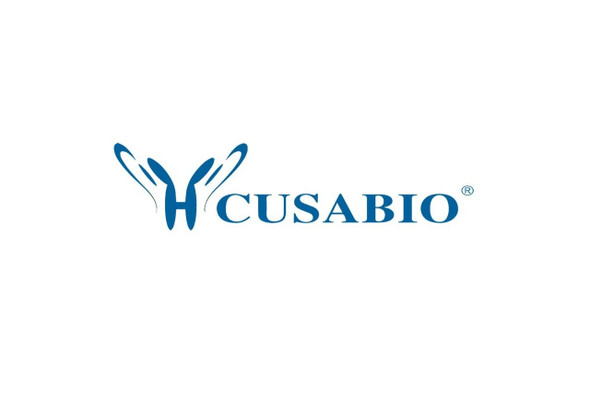Cusabio Polyclonal Antibodies
NAT10 Antibody | CSB-PA863939LA01HU
- SKU:
- CSB-PA863939LA01HU
- Availability:
- 3 to 7 Working Days
Description
NAT10 Antibody | CSB-PA863939LA01HU | Cusabio
NAT10 Antibody is Available at Gentaur Genprice with the fastest delivery.
Online Order Payment is possible or send quotation to info@gentaur.com.
Product Type: Polyclonal Antibody
Target Names: NAT10
Aliases: RNA cytidine acetyltransferase (EC 2.3.1.-) (18S rRNA cytosine acetyltransferase) (N-acetyltransferase 10), NAT10, ALP KIAA1709
Background: RNA cytidine acetyltransferase with specificity toward both 18S rRNA and tRNAs (PubMed:25653167) . Catalyzes the formation of N (4) -acetylcytidine (ac4C) at positions 1337 and 1842 in 18S rRNA (By similarity) . Required for early nucleolar cleavages of precursor rRNA at sites A0, A1 and A2 during 18S rRNA synthesis (PubMed:25653167) . Catalyzes the formation of ac4C in serine and leucine tRNAs (By similarity) . Requires the tRNA-binding adapter protein THUMBD1 for full tRNA acetyltransferase activity but not for 18S rRNA acetylation (PubMed:25653167) . Can acetylate both histones and microtubules. Histone acetylation may regulate transcription and mitotic chromosome de-condensation. Activates telomerase activity by stimulating the transcription of TERT, and may also regulate telomerase function by affecting the balance of telomerase subunit assembly, disassembly, and localization. Acetylates alpha-tubulin, which may affect microtubule stability and cell division (PubMed:14592445, PubMed:17631499, PubMed:18082603, PubMed:19303003) .
Isotype: IgG
Conjugate: Non-conjugated
Clonality: Polyclonal
Uniport ID: Q9H0A0
Host Species: Rabbit
Species Reactivity: Human
Immunogen: Recombinant Human RNA cytidine acetyltransferase protein (909-1025AA)
Immunogen Species: Human
Applications: ELISA, WB, IHC, IP
Tested Applications: ELISA, WB, IHC, IP; Recommended dilution: WB:1:500-1:5000, IHC:1:200-1:500, IP:1:200-1:2000
Purification Method: >95%, Protein G purified
Dilution Ratio1: ELISA:1:2000-1:10000
Dilution Ratio2: WB:1:500-1:5000
Dilution Ratio3: IHC:1:200-1:500
Dilution Ratio4: IP:1:200-1:2000
Dilution Ratio5:
Dilution Ratio6:
Buffer: Preservative: 0.03% Proclin 300
Constituents: 50% Glycerol, 0.01M PBS, pH 7.4
Form: Liquid
Storage: Upon receipt, store at -20°C or -80°C. Avoid repeated freeze.
Initial Research Areas: Cell Biology
Research Areas: Epigenetics & Nuclear Signaling;Cell biology;Signal transduction















